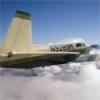Certified to Experimental Dream Thread
Would you decertify your Mooney?
32 members have voted
-
Members Online
- skykrawler
- donkaye
- AJ88V
- christaylor302
- SKI
- BigD
- Vance Harral
- DXB
- RCBass
- KLRDMD
- flyinjake
- spistora
- Aerodon
- Paul Thomas
- EricJ
- MaxwellSmart86
- PT20J
- Culver LFA
- Niko182
- 1980Mooney
- Chaseford10
- Jakes Simmons
- Stealth Mooney
- Danb
- FlyMoe
- bigmo
- TNdebdriver
- Ryan ORL
- Red Leader
- joemoriss
- 65MooneyPilot
- Jim F
- AndreiC
- Nova_flyer
- richardbrochu27
- eman1200
- kortopates
- pirate
- Sue Bon
- FLYFST
- MikeOH


Recommended Posts
Join the conversation
You can post now and register later. If you have an account, sign in now to post with your account.